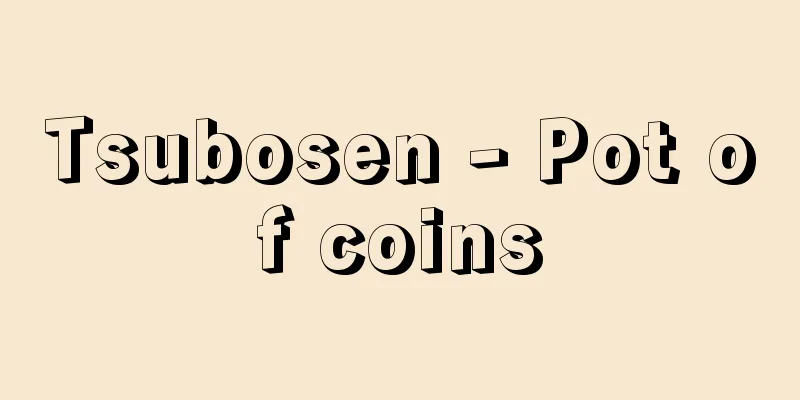Tsubosen - Pot of coins

|
A sake brewing tax levied per sake jar during the Kamakura and Muromachi periods. It is also called "sake jar money." The Muromachi Shogunate collected this tax from sake brewers in Kyoto and the surrounding area as a regular monthly tax from 1393 onwards. In Nara, Kofuku-ji Temple levied the jar money on Bodai-san Temple. Source: Encyclopaedia Britannica Concise Encyclopedia About Encyclopaedia Britannica Concise Encyclopedia Information |
|
鎌倉,室町時代に酒壺1個を単位として課した酒造税。酒壺銭ともいう。室町幕府は明徳4 (1393) 年以後京都とその周辺の酒屋から毎月恒例の課役として徴収した。奈良では興福寺が菩提山寺に壺銭を賦課している。
出典 ブリタニカ国際大百科事典 小項目事典ブリタニカ国際大百科事典 小項目事典について 情報 |
>>: Tsubo Shozoku - Tsubo Shozoku
Recommend
Assur-uballit I (English spelling)
…Even during this period, the Assyrian dynasty co...
Oligopoly regulation
In an oligopoly market, not only does it cause los...
Private binding
...In the 12th century, schools of bookbinding we...
Product life cycle
Also known as the product life cycle, PLC. The ide...
Callosciurus caniceps thaiwanensis (English spelling) Callosciurus caniceps thaiwanensis
...A rodent mammal of the Sciuridae family. This ...
Kujo Yoritsune
The fourth Shogun of the Kamakura Shogunate. The ...
Cape Toi
The southernmost cape in Miyazaki Prefecture. It ...
Turtle pedestal - Kifu
〘Noun〙 A stone base for a monument carved in the s...
Incense burner - Kashakoro
… In the Sui and Tang dynasties, Boshan-style inc...
Johan Wilhelm Hittorf
German chemist and physicist. Born in Bonn. After...
Barqa
…the area in eastern Libya bordering the Mediterr...
Körner, Theodor
Born: April 24, 1873, Komárno, Hungary [died] Janu...
Cristeros
"What Sinarkism wants is a homeland for the ...
Agumasheneberi - Agumasheneberi
...promoted the independence and centralization o...
Artificial larynx
An instrument used to produce speech after larynge...









